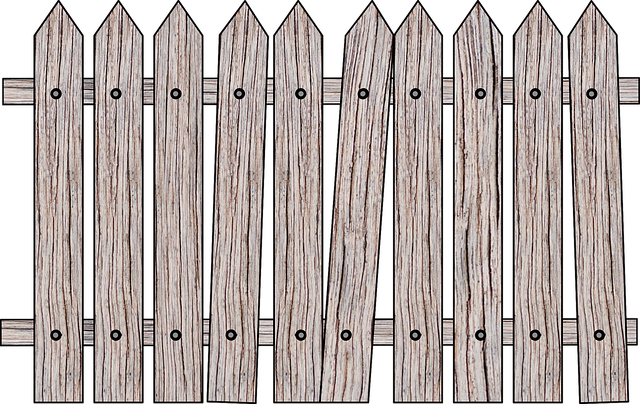In coastal regions, where harsh weather conditions and saltwater exposure are constant threats, selecting the right fencing material is paramount. This article explores durable wooden fencing as a robust solution for protecting properties along the shore. We delve into the unique challenges of coastal fencing, highlighting the benefits of wood in withstanding these demands. From material selection to installation techniques and maintenance advice, this guide equips homeowners and contractors with the knowledge needed to invest in long-lasting coastal defenses.
- Understanding Coastal Fencing Challenges
- Benefits of Durable Wooden Fencing
- Material Selection for Saltwater Resistance
- Installation Techniques for Coastal Conditions
- Maintenance Tips for Longevity
Understanding Coastal Fencing Challenges
Coastal areas present unique challenges when it comes to fencing due to their harsh environmental conditions. Saltwater, strong winds, and frequent storms can take a toll on traditional fencing materials. Wood, in particular, requires special consideration as it is susceptible to rot and insect damage when exposed to salt air and moisture. Understanding these challenges is the first step towards selecting the right fencing solution for coastal properties.
The durability of wooden fences in such regions depends heavily on the quality of the wood and its treatment. Opting for pressure-treated or naturally durable hardwoods like cedar or teak can significantly extend the lifespan of the fence. Additionally, proper installation techniques, including elevated posts set in concrete, can protect the fence from direct contact with the ground, where moisture levels are highest.
Benefits of Durable Wooden Fencing
Durable wooden fencing offers an array of benefits for coastal areas, where traditional materials might struggle to withstand harsh weather conditions and salty environments. Firstly, wood is a naturally sustainable resource that can be sustainably sourced and renewed, making it an eco-friendly choice. This is particularly important for coastal regions where environmental impact should be a key consideration.
Additionally, durable wooden fencing provides excellent protection against strong winds, storms, and erosion, which are common in coastal settings. The robust nature of the material ensures that fences can withstand these challenges, protecting properties, landscapes, and even wildlife habitats. Moreover, wood has natural insulating properties, helping to regulate temperature fluctuations caused by coastal climates, providing both comfort and energy efficiency for nearby homes or public spaces.
Material Selection for Saltwater Resistance
When selecting materials for coastal fencing, resistance to saltwater is paramount to ensure longevity. Regular wood can be significantly damaged by the corrosive effects of seawater and salty moisture in the air, leading to rot, warping, and early decay. For durable coastal fencing, consider using treated or tropical hardwoods that are naturally resistant to rot and insects. Species such as teak, cedar, and redwood have long been favored for their outstanding durability and resistance to saltwater exposure.
Additionally, specialized pressure-treated wood formulations can offer enhanced protection against corrosion. These treatments involve immersing the wood in chemical solutions that penetrate deep into the fibers, creating a barrier against moisture and salt. This process significantly increases the material’s lifespan, making it suitable for demanding coastal environments without compromising aesthetics or strength.
Installation Techniques for Coastal Conditions
When installing wooden fencing in coastal areas, it’s crucial to employ specific techniques that account for the unique challenges posed by salt air, frequent moisture, and potential wind exposure. One effective method is pre-treating the wood with weatherproof coatings before installation. These protective layers not only enhance durability but also prevent rot and insect infestation, ensuring the fence can withstand harsh coastal conditions.
Another key consideration is proper drainage. Installing the fence on a slight gradient to allow water run-off or incorporating channels to direct moisture away from the structure is essential. Additionally, using sturdy posts and brackets that can resist high winds and securing the fence to solid anchors will prevent damage caused by coastal storms.
Maintenance Tips for Longevity
To ensure your durable wooden fence maintains its longevity in coastal areas, regular maintenance is key. Start by inspecting the fence regularly for any signs of damage or rot, especially after severe storms or high winds. Promptly repair or replace any damaged sections to prevent further deterioration.
Keep the fence clean by removing accumulated salt and debris with a soft brush or garden hose. Regular cleaning helps protect the wood’s finish and prevents the buildup of moisture, which can lead to rot. Additionally, consider applying a fresh coat of weather-resistant stain or sealant every few years to shield the wood from the constant onslaught of salt air and sunlight.
